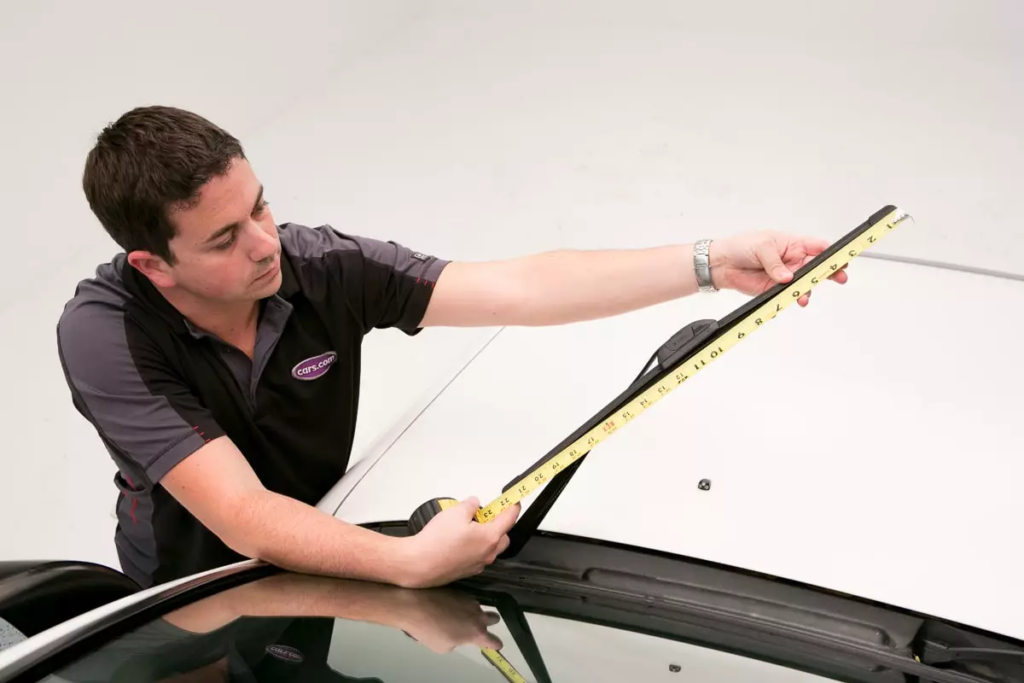
Did you know that many architects and builders need to know the standard length of a car? Such information is useful for determining the size requirements of structures like garages and parking lots. However, every car owner, to be honest, needs to know how long their car is. We’ll get into some of the other explanations behind that below as well.
Finding a parking spot or being safe while driving is two examples. Perhaps the most fundamental consideration is whether or not the vehicle will fit in your garage.
If you live in a major city or a neighborhood with tight streets and sharp curves, knowing the typical car size will help you choose the right vehicle. Interestingly, the country’s highways and car lots are dominated by larger vehicles. Larger vehicles are perceived as safer and typically have lower insurance premiums. There is always a significant risk to pedestrians and other drivers from the larger or heavier cars on the roadways.
Car sizes have changed over time due to factors including demand and geography. As a result, it is crucial to have a thorough understanding of the typical car length before making a purchase.
How long is a car?
Approximately 4.8 m (14.7 ft) is considered to be the average length of a car. The length of cars and trucks normally ranges from 10 to 18 ft, despite the fact that the length of vehicles can vary depending on the manufacturer and model. A smaller car, such as a Mini Cooper, will be approximately 3m (10 ft) long, whereas the length of a medium sedan is 4.26 m (14 ft).
The shortest passenger car in the United States is a Chevrolet Spark, which is less than 3.65 m (12 ft) long, and the longest passenger car is a Rolls-Royce Phantom, which is about 6 m (20 ft) long. A full-size car typically measures approximately 4.78 m (15.7 ft) in length. The length of a car can extend as a result of features such as increased luggage space and passenger capacity.

How does length affect a car?
When most people think of typical car length, they think about safety. Longer vehicles have always been thought to be safer. As technology, materials, and construction have advanced, however, smaller cars are now safer for passengers than their larger counterparts.
The average car size in the United States has been steadily increasing over the past several decades. The area you live in and the car’s gas mileage are two additional major considerations when deciding on a vehicle’s overall length.
Customers place a premium on vehicles with high fuel efficiency. It’s also worth noting that insurance rates for SUVs and pickup trucks tend to be reasonable. In the end, though, everything comes down to what the buyer wants.
Average Length of Different types of Cars

| Size Class | Model examples | Length |
| Mini Cars | Suzuki Alto | 3.2 m (10.5 ft) |
| Small Car | Kia Rio | 4.2 m (13.8 ft) |
| Small SUV | Ford Escape | 4.38 m (14.4 ft) |
| Mid-Sized | Audi A4 | 4.51 m (14.8 ft) |
| Full-Sized | Audi A6 | 4.78 m (15.7 ft) |
| Large SUV | Cadillac Escalade | 5.09 m (16.7 ft) |
| Small Pickup | Nissan Navara | 4.98 m (16.3 ft) |
| Large Pickup | Chevrolet Silverado | 5.6 m (18.4 ft) |
Why is it important to know your car’s length
You might be surprised to learn this, but being aware of the length of your car can be important. For example, knowing that information could enable you to plan ahead and estimate your towing charges. Due to the requirement for larger towing trucks when servicing huge vehicles, some towing companies charge more.
Let’s imagine that you also have plans to hire a car or upgrade your current vehicle. Wouldn’t you want to select a vehicle that is similar in length to your present vehicle? That might make it easier for you to adjust immediately to the other car’s size. Furthermore, you might drive with more assurance if you are familiar with the area.
Knowing the length of your car might also be helpful when shopping for specific external items. For instance, you must always measure your car before ordering a car cover. The same holds true whether you intend to purchase a utility or travel trailer. So be sure to measure the typical length of your car before choosing a trailer.
How do I find out the length of my car?

Finding out how long your car is can be done in a few easy ways.
- The simplest method for figuring out the length of the car is to use a VIN decoder. To find them, enter a VIN decoder into a web browser. There are many free options available. Results will show after entering your vehicle identification number into the VIN decoder.
- If you bought your car from a nearby dealer, you could quickly find out how long it is. Simply offer your VIN and license plate number to the dealership over the phone. They will provide you with the details you require after a brief check.
- Any online auto store can also tell you how long your car is. Type in your license plate number. You may look up your car’s measurements and other information by looking up the results for your particular vehicle.
- You may measure your car by hand, and aftermarket components can vary the length. The findings of the VIN decoder will be different, for instance, if your car has a different bumper. Use a yardstick or tape measure to measure. Measure below for the most accurate outcome.
FAQ
How wide are cars
A car’s average width is 19 m (5.8 ft). Car widths frequently shift to optimize aerodynamic performance or accommodate supplementary safety features. The smallest car in the nation is the Chevrolet Spark which is 1.58 m (5.2 ft). The Tesla Model X, which measures about 2.25 m (7.4 ft) wide when the side mirrors are folded in, is the biggest car currently available outside the ultra-luxury sector.
Features such as side airbags and lane departure sensors can extend a vehicle’s width to a degree that is more than that of standard parking spaces. This makes it possible for a car to park in a narrower space.
How much does the average car weigh
It goes without saying that contemporary cars are increasingly heavier than their predecessors. This is due to their increasing complexity and integration with several gadgets and pieces of technology. The cost of the luxuries like surround-sound radio, heated and ventilated seats, temperature control, and complex infotainment systems is fairly high. Additionally, modern cars come equipped with a variety of emissions-controlling technologies. This adds even more weight to the body.
The US EPA estimates that the weight of the typical car in the 2020s will be around 1,857 kg (4,094 lbs). Granted, this represents an average of all sold car types. Superminis and other smaller vehicles may only weigh 1,179 kg (2,600 lbs). Meanwhile, the average weight of compact vehicles and SUVs is 1496 kg (3,300 lbs). Large SUVs and vehicles could weigh up to 2993 kg (6,600 lbs) at their maximum capacity.
Conclusion
At last, I would say there is no one response to the query “How long is a car?” as they come in a variety of sizes and forms. A car typically measures 4.48 m (14.7 ft), or around the size of an Audi A4. But based on the body type, it may be shorter or longer.
When you’re getting ready to buy a new car, knowing how long a car is will be quite helpful. When you bring it home for the first time, you can make sure it meets your needs and avoid unpleasant surprises.




